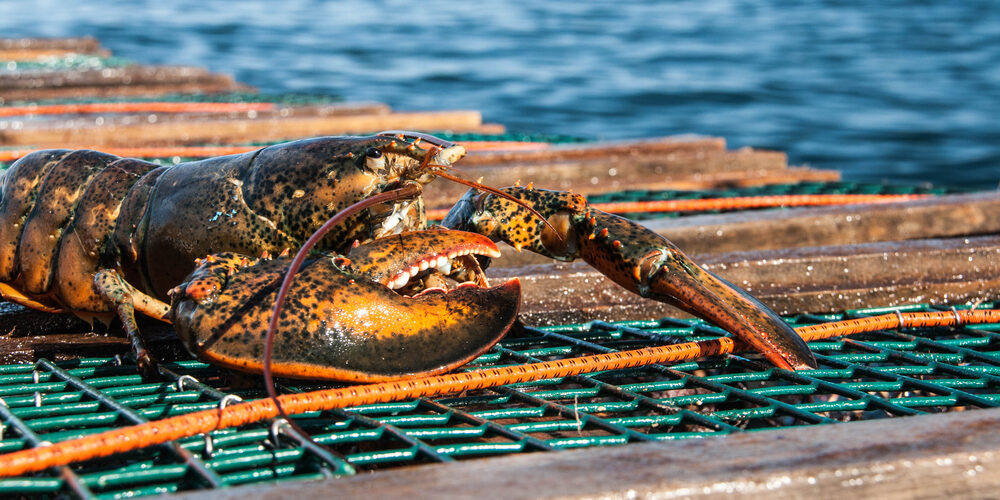Every year, as the winter chill thaws and the Atlantic breeze begins to warm, seafood professionals from around the world turn their eyes to the pristine waters of Canada’s East Coast. Why? Because spring marks the arrival of the Canadian lobster harvest season—a time when the finest lobsters are brought to shore, celebrated not just for their taste and quality, but for the care and sustainability behind their catch.
In this blog, we’ll explore why spring is the best season for Canadian lobster, the regions involved in the harvest, industry insights on catch volumes and pricing, and why seafood professionals should plan their procurement around this pivotal time.
1. The Seasonal Kick-Off: When and Where It Happens
Canada’s lobster fishery is divided into 41 distinct Lobster Fishing Areas (LFAs), each with their own carefully regulated open and close dates. Spring marks the opening of major LFAs such as those in the Gulf of St. Lawrence, including areas off Prince Edward Island, Cape Breton, and parts of New Brunswick and Nova Scotia.
In 2025, the spring lobster season in these regions officially begins on April 22. For industry professionals, this marks a critical window to secure the freshest catches for both domestic markets and international distribution.
2. Spring Lobsters: The Hallmark of Quality
Spring-harvested lobsters are prized for several reasons:
- Hard Shell Advantage: By springtime, lobsters have fully recovered from the moulting process (typically occurring in summer/fall), resulting in hard shells packed with dense, flavourful meat. These lobsters are ideal for export and longer shelf life.
- Cold, Clean Waters: The frigid Atlantic waters during early spring preserve the lobster’s delicate flavour and texture, contributing to their signature sweetness and firmness.
- Consistent Supply: Spring is when the bulk of Canada’s annual lobster landings occur. With areas like the Gulf of St. Lawrence expecting up to 35,000 metric tons of fresh lobster, the supply chain is robust and predictable.
3. Is 35,000 Metric Tons a Good Number?
The expected 35,000 metric tons in 2025 is a solid benchmark, demonstrating both stock health and fishing efficiency. For comparison:
- Nova Scotia’s Lobster Fishing Areas 33 and 34 recorded nearly 23,000 metric tons in their 2023-24 season.
- Prince Edward Island alone landed over 13,600 metric tons in 2023.
This puts the spring Gulf season on the higher end of Canada’s regional lobster production. While high volumes can affect pricing at the dock (more supply sometimes equals lower prices), it presents an excellent opportunity for seafood professionals to stock up while ensuring margins and freshness.
4. Sustainability and Regulation: A Model for the World
Canada’s lobster fishery is a global model for responsible harvesting. Key features include:
- Trap-Based Fishing: This low-impact method reduces bycatch and environmental damage.
- Size and Sex Restrictions: Undersized and egg-bearing females must be returned to the sea.
- Seasonal Closures: Ensures lobsters can moult and reproduce without pressure.
- Tagging and Monitoring: Each trap and licence is accounted for, ensuring traceability.
These policies have helped Canadian lobster fisheries maintain Marine Stewardship Council (MSC) certification and international trust.
5. Market Trends: Pricing, Demand and Logistics
In recent years, global demand for lobster has stabilised post-COVID, with markets in Asia, Europe, and North America remaining strong. Spring prices tend to be more favourable than winter harvests due to higher volumes, but quality remains high.
Professionals should also note:
- Air and sea freight routes from Halifax and Moncton are well established.
- Consumer-pack options are growing in popularity for retail, with brands like Far West leading the charge.
- Live lobster exports see high movement in April to June, aligning with major holidays in Asian markets.
6. Preparing for the Season: Tips for Industry Buyers
To maximise returns this spring, consider the following:
- Pre-order with trusted suppliers like iFish to secure the best pricing and availability.
- Diversify product offerings – consider live, frozen tail, claw meat, or consumer-ready packs.
- Plan for storage: Spring harvests come in large volumes. Coordinate with cold storage providers in advance.
7. Canadian Lobsters vs. Boston Lobsters: What’s the Difference?
Here in Asia, the term “Boston lobster” is widely used on menus and at seafood markets. But there’s a little-known fact: many of the so-called Boston lobsters served across Hong Kong, China, Singapore, and Malaysia are actually Canadian lobsters.
The confusion stems from early trade routes and naming conventions. While Boston is a major export hub for North American lobsters, most of the supply comes from Canadian waters, especially Nova Scotia and Prince Edward Island.
Key differences:
- Canadian lobsters are primarily harvested from colder waters, giving them firmer meat and better flavour.
- Canada’s fisheries are more regulated, with sustainable practices that protect the ecosystem.
- Canadian lobsters are often hard shell and preferred for export due to better survival rates in shipping.
For professionals, promoting Canadian lobsters with clarity helps educate consumers and differentiate premium supply from generic sources.
8. Let Ifish Be Your Spring Lobster Partner
With over a decade of trusted seafood trading experience in Hong Kong, Ifish is your gateway to premium Canadian lobsters. Whether you’re looking for fresh live supply, frozen portions, or branded consumer packs, our network and expertise ensure you receive only the best.
Contact us today to pre-order for the spring season or to explore our full seafood portfolio.
Email: sales@ifish.hk
Let’s make this season one to savour, with premium Canadian lobsters—straight from the source, proudly brought to you by ifish. Experience the season. Savour the quality. Spring is here.








